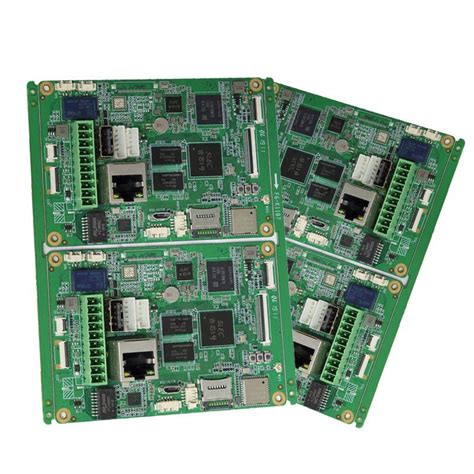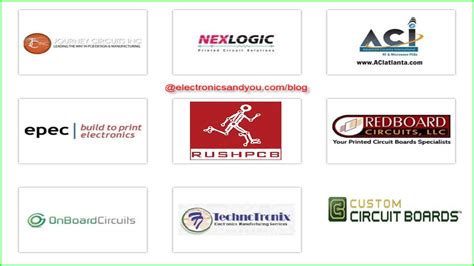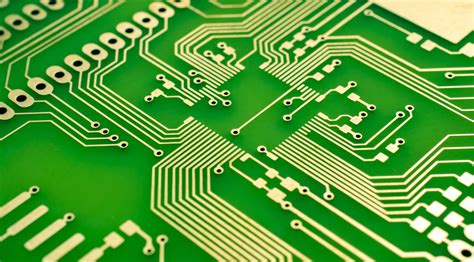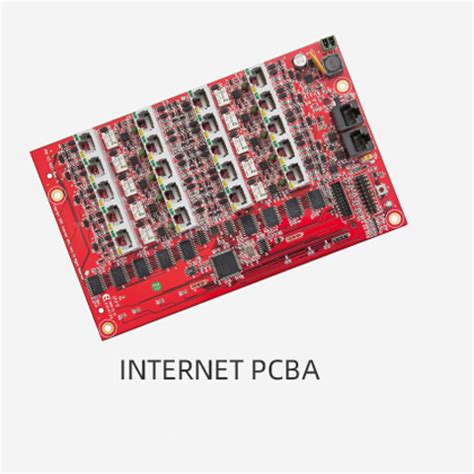Streamline Your Project with Custom PCB Printing and Assembly
Key Takeaways
The realm of custom PCB printing and assembly offers significant advantages that are pivotal for enhancing project efficiency. By investing in pcb assembly, developers can streamline their operations, ultimately reducing time-to-market. One key takeaway is the importance of understanding the intricate processes associated with custom PCB manufacturing. This knowledge enables teams to identify and leverage the unique benefits of working with a professional service provider. Furthermore, effective pcba practices enable more precise results, ensuring that all components are accurately placed and function seamlessly together. Notably, quality control measures should be prioritized to maintain the integrity of the PCBs produced. As technology continues to evolve, staying abreast of emerging trends in PCB manufacturing can also provide invaluable insights for future projects. Thus, embracing custom solutions in PCB design and assembly not only optimizes efficiency but also positions developers for success in an increasingly competitive landscape.
Understanding Custom PCB Printing: An Overview
Custom PCB printing is an essential aspect of modern electronics, providing a tailored approach to creating printed circuit boards that meet specific project requirements. By employing advanced techniques in pcb assembly and design, developers can produce high-quality boards that enhance the functionality and reliability of their electronic devices. The process begins with precise specifications, allowing for intricate designs that optimize space and performance. In custom PCBs, the layout can be adjusted according to the unique needs of the project, leading to reduced manufacturing costs and minimized time-to-market.
One of the significant advantages of pcb assembly, often referred to as PCBA, is its ability to accommodate complex designs that are crucial for cutting-edge technologies. As projects scale up, a well-executed custom PCB printing process can significantly advance efficiency and accuracy. Additionally, custom solutions help in achieving higher yields during production due to better alignment with operational tolerances.
Moreover, selecting experienced manufacturers who specialize in custom PCB assembly can provide further benefits. A reliable service provider not only understands the nuances of modern electronics but also ensures stringent quality control throughout the production process. With quality assurance at every stage, from materials selection to final testing, projects are more likely to meet industry standards and regulatory requirements.
“Investing time in understanding your project’s specific needs regarding custom PCB solutions can save resources and enhance overall outcomes.”
As technology continues to evolve, embracing custom pcb assembly and leveraging it wisely within your projects is a decisive move towards fostering innovation and achieving precision in your outcomes.
The Benefits of Custom PCB Assembly for Your Project
When it comes to enhancing project efficiency, custom PCB assembly offers substantial advantages that can significantly impact the outcome of technology development. One of the primary benefits of engaging in custom PCBA services is the ability to tailor the printed circuit board designs specifically to meet the unique requirements of your project. This level of customization allows for optimized layouts, improved performance, and reduced manufacturing costs.
Additionally, partnering with experienced providers in PCB assembly ensures that your boards are produced using high-quality materials and precise processes, contributing to greater reliability and longevity. The assembly process is vital as it combines various electronic components onto a single board, and a well-executed PCBA can lead to minimizing errors during production and enhancing the overall integrity of your devices.
To illustrate these advantages further, consider a comparative analysis:
| Benefit | Custom PCB Assembly | Standard Assembly |
|---|---|---|
| Design Flexibility | ✔️ | ❌ |
| Cost Efficiency | ✔️ | ❌ |
| Quality Assurance | ✔️ | Limited |
| Turnaround Times | Variable | Longer |
With custom PCB assembly, you are more likely to achieve timely delivery schedules, which is crucial in keeping your project on track. Moreover, specialized services can provide insights during the design phase that help in minimizing potential issues before production begins. This proactive approach means fewer delays and likely higher satisfaction with the final product.
In summary, selecting custom PCBA not only supports tailored solutions but also fosters enhanced collaboration with service providers who can guide your project from conception through completion.
Key Processes in Custom PCB Printing and Assembly
The journey of developing a successful electronic device begins with understanding the key processes involved in custom PCB printing and assembly, commonly referred to as PCBA. The initial step is the design phase, where engineers create a schematic representation of the circuit. This schematic is then translated into a layout, which specifies how all components will be arranged on the board. Next, custom PCB printing comes into play, where the printed circuit boards are fabricated. This process involves multiple techniques, including etching, lamination, and drilling, tailored to meet specific project requirements.
Following fabrication, PCB assembly begins. This crucial stage encompasses placing electronic components onto the printed board and soldering them into position—usually performed using either hand soldering or automated pick-and-place machines. Ensuring accurate alignment and secure connections is vital for operational integrity; thus, automation plays a pivotal role in achieving high precision and consistency across larger production runs.
Moreover, testing is an integral part of the process to identify any potential flaws early on. By incorporating rigorous quality control measures throughout both printing and assembly phases, organizations can enhance the reliability of their products. Ultimately, understanding these key processes helps streamline project timelines and elevates the quality of final outputs, making custom PCBA an invaluable component for technology developers aiming for excellence in their projects.
Evaluating and Selecting the Right Service Provider
When it comes to custom PCB printing and assembly, choosing the right service provider is crucial for ensuring the success of your project. Start by assessing the provider’s experience in PCB assembly and their capability to deliver high-quality PCBA services tailored to your specific requirements. Look for a company that offers a comprehensive range of services, including design support, prototyping, and manufacturing. It’s also essential to check their portfolio for examples of previous work, which can give insights into their expertise and quality standards.
Furthermore, inquire about their production processes and whether they utilize advanced technologies for precision in manufacturing. Effective communication is another key factor; your selected provider should be open to discussing project details and providing regular updates throughout the assembly process. Don’t hesitate to ask for references or customer testimonials to gauge satisfaction levels. Lastly, consider budgetary constraints without compromising quality; finding a balance between cost-effectiveness and excellence in service is vital for achieving optimal results in your custom PCB endeavors.
Tips for Optimizing Your PCB Design for Assembly
When it comes to pcb assembly and ensuring a seamless production process, optimization of your design is crucial. Start by simplifying your layout; the more straightforward your design, the easier it is for manufacturers to work with it. This enhances not only the ease of pcba but also the overall quality of the final product. Utilize appropriate pad sizes and placements, ensuring they are compatible with standard component sizes and align with assembly methods. Incorporating features like vias effectively can also help in streamlining connections while keeping the board compact. Additionally, consider the orientation of components; placing them in a consistent direction can significantly aid in automated assembly processes. Ensure that silkscreen markings are clear and don’t obstruct component placements, as this facilitates better assembly practices and improves overall functionality. Remember, an optimized design reduces errors during prototyping and speeds up time to market, which is essential for technology developments aiming for precision results. By following these guidelines, you can create a functional design that not only meets your project goals but also enhances efficiency in pcb assembly operations.
Quality Control: Ensuring Precision in Your PCBs
Maintaining quality control is paramount in the world of custom PCB printing and pcb assembly. The precision of your PCBA not only affects performance but also impacts the overall reliability of your technology products. Implementing rigorous quality control processes can help identify potential issues early in the production cycle. This can include component inspections, electrical testing, and thorough visual checks to ensure that each PCB meets the established specifications. In addition to mitigating risks, quality control practices can enhance efficiency by reducing rework and associated costs. By fostering a culture of quality, organizations can ensure that their PCBA projects are delivered on time and with the highest standards, ultimately leading to increased customer satisfaction. Employing advanced tools and methodologies, like automated optical inspection (AOI) and functional testing, enables teams to scrutinize every detail meticulously. This attention to detail in the quality assurance phase allows developers to focus on innovation while achieving consistent and reliable results in their projects. The commitment to quality throughout the pcb assembly process not only enhances product performance but also reinforces a company’s reputation in a competitive marketplace.
Case Studies: Success Stories in Custom PCB Projects
In exploring the impact of custom PCB printing and assembly on various projects, several success stories illustrate the advantages and capabilities of incorporating these technologies. One notable example is a startup focused on developing innovative medical devices. By utilizing PCB assembly services, they were able to rapidly prototype their new product, significantly reducing development time while enhancing the precision of each component. This leap in efficiency allowed them to meet crucial deadlines for regulatory approvals, ultimately leading to a successful product launch that combined cutting-edge technology with reliability.
Another compelling case involved an automotive electronics company that turned to advanced pcba solutions for increasing the performance and durability of their electronic systems. By carefully selecting a specialized service provider that understood their specific requirements, they improved not only the quality of their pcb assembly but also optimized design elements to withstand harsh environmental conditions. This collaboration resulted in a substantial increase in customer satisfaction, with fewer returns and enhanced product reputation.
These case studies underscore how engaging with expert custom PCB printing services not only streamlines project workflows but also enables companies to push boundaries in technology development. By leveraging tailored solutions in pcba, businesses can navigate complex challenges more effectively and achieve remarkable results that set them apart in competitive markets.
Future Trends in PCB Technology and Manufacturing
As the demand for advanced electronics continues to grow, the world of custom PCB printing and assembly is undergoing significant transformations. One key trend is the shift toward flexible PCBs, which offer versatility in design and application, catering to everything from wearables to intricate automotive systems. The integration of IoT (Internet of Things) technologies requires a more efficient PCBA (PCB Assembly) process, leading manufacturers to adopt automated technologies that enhance production speed while maintaining quality. Moreover, sustainability is becoming a priority, prompting companies to explore eco-friendly materials and processes that reduce waste in PCB assembly. Innovations in 3D printing are also making waves, allowing for rapid prototyping and more complex designs that were once prohibitive with traditional methods. Additionally, as data requirements escalate, high-frequency PCBs are being developed with advanced materials that ensure reliability while minimizing signal loss. Keeping pace with these trends is essential for businesses aiming to leverage the latest advancements in technology and maintain a competitive edge in their respective markets.
Conclusion
In summary, integrating custom PCB printing and assembly into your projects can significantly enhance efficiency and precision. By understanding the fundamentals of pcb assembly, such as the components involved and their interconnections, you can better appreciate how pcba services contribute to the overall functionality of your product. Effective collaboration with a reliable service provider is crucial; it not only optimizes your design but also ensures that the manufacturing process adheres to quality control standards. As you move forward, consider the insights shared in this article to make informed decisions that align with your project goals. The continuous evolution in PCB technology will likely offer even more innovative solutions, so staying updated on the latest trends is key to maintaining a competitive edge in your technology development.
FAQs
What is custom PCB printing and assembly?
Custom PCB printing and assembly, often referred to as PCB assembly or PCBA, involves the process of designing and fabricating printed circuit boards (PCBs) tailored to specific project requirements, followed by the assembly of electronic components onto these boards.
What are the key benefits of choosing custom PCBA services?
Opting for custom PCB assembly provides numerous advantages, including enhanced project efficiency, reduced time to market, and improved quality control. Tailored solutions ensure that the final product meets precise specifications, thus enabling better performance.
How do I select the right service provider for PCB assembly?
When evaluating potential service providers for PCBA, consider factors such as their experience, quality assurance practices, technology capabilities, and customer support. It’s also essential to review case studies or testimonials from previous clients to gauge their reliability.
What processes are involved in custom PCB printing?
The key processes in custom PCB printing and assembly include designing the PCB layout, selecting suitable materials, fabricating the circuit board, applying solder paste, placing components accurately, soldering them in place, and finally testing for defects to ensure quality.
How can I optimize my PCB design for assembly?
To optimize your design for effective PCB assembly, utilize design software that supports DFM (Design for Manufacturability) practices. Additionally, standardize component footprints and keep trace widths consistent while minimizing layers when possible to facilitate easier assembly.







